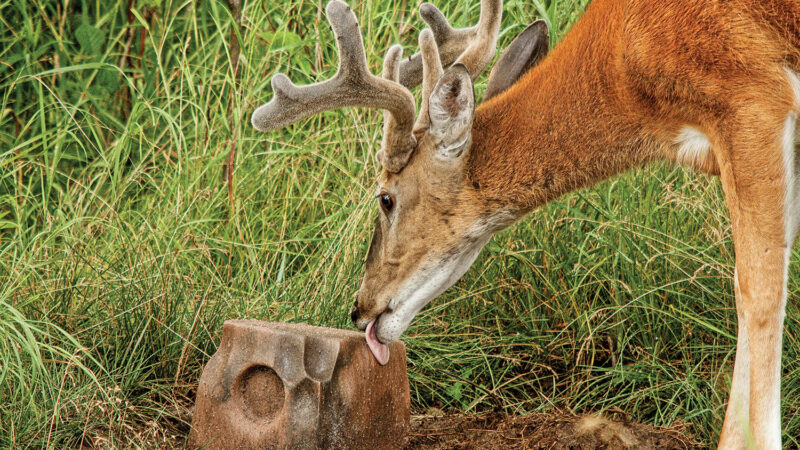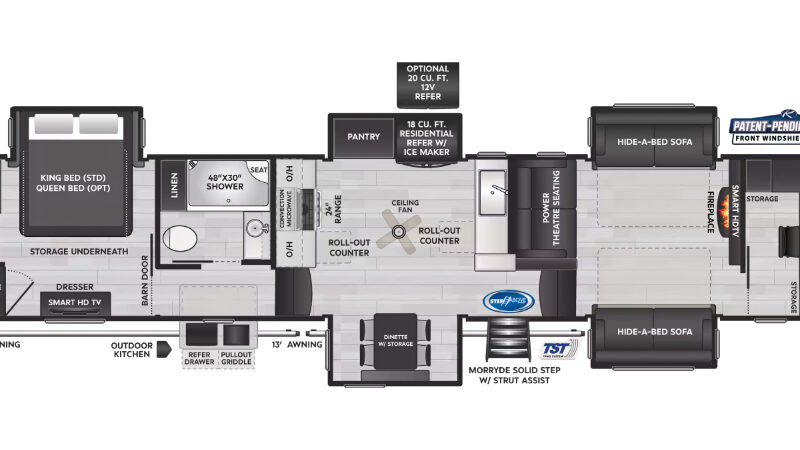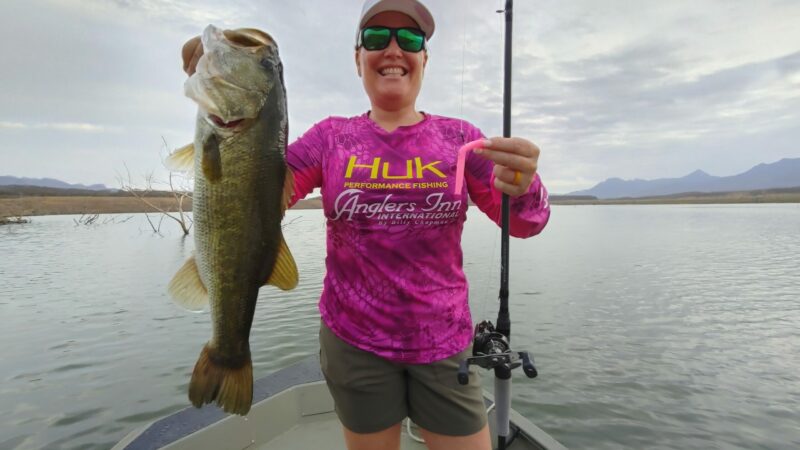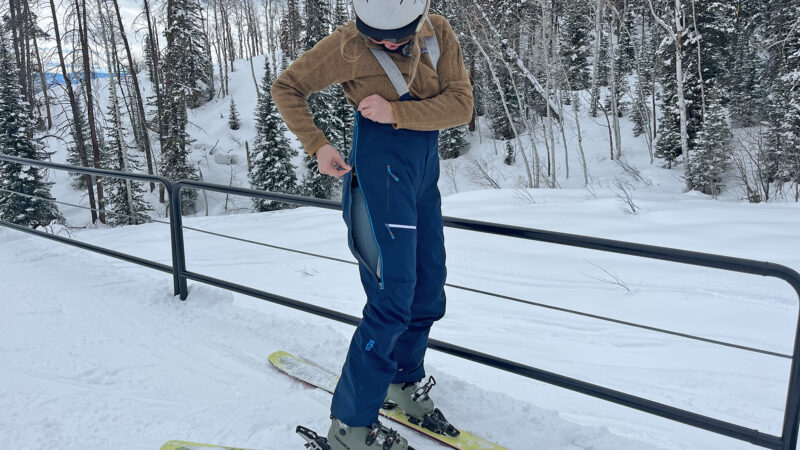Fudd Lore: 5 of the Worst Myths in Rifle Shooting and Hunting
We may earn revenue from the products available on this page and participate in affiliate programs. Learn More ›
In recent years the term “Fudd” has become common slang within the hunting community. At first, the term seems like a niche “Okay Boomer,” another generational cheap shot that’s nothing more than smart-ass kids disregarding the wisdom of their elders. But it actually cuts deeper.
The inspiration for the term “Fudd” is, of course, the Warner Bros. cartoon character Elmer J. Fudd, the dim-witted, double-barrel-toting stumblebum, whose name was likely influenced by the slang “fuddy-duddy” — defined as a person who is old-fashioned and fussy. Elmer Fudd is a caricature of the hunter, and a subtly accurate one at that. He’s gonna get dat wabbit if it’s da wast thing he does, and his irrational antics and outlandish efforts are universally ineffective.
What I find valid about using “Fudd” to describe some hunters today is that Elmer Fudd is gullible, but he also latches onto his convictions relentlessly. This is not a generational thing. Fudds can be any age or from any background. To be a Fudd, you simply have to hold onto an old idea no matter how much new and better information contradicts it.
This mindset has always been a part of hunting culture, and everyone is probably guilty of being a Fudd from time to time. But transcending this day-to-day casual Fuddyness is the persistence of Fudd lore. These are the myths, sayings, and Fuddy know-how that are regurgitated on websites, internet forums, social media, and across sporting-goods counters daily. Without digging deeper, a shooter or hunter could assume that these commonly repeated misbeliefs are plain fact.
In the spirit of debunking this Fudd lore, I’ve identified five prominent and problematic myths that are particular to rifle hunting and shooting. Over the past couple years I’ve challenged and unlearned many of my own long-held thoughts and perceptions on everything from how bullet energy and cartridge size actually matter, to how to zero my rifle, practice, and what accuracy I should actually expect from my hunting rifles. Hopefully this article will help you do the same.
Fudd Myth #1: More Bullet Energy and Big Cartridges Bring More Killing Power
“Bigger is better.” If I had a nickel for every time I’ve heard this in the context of hunting cartridges, I’d be on a million-dollar safari in Africa rather than writing this story. This, to me, is probably the pinnacle of all Fudd lore. There are lots of hunters who genuinely believe that bigger guns universally kill animals more quickly and effectively than smaller guns. Though that can be true in some circumstances, it’s just not that simple. In fact, depending on bullet choice, smaller cartridges will sometimes inflict much more damage than a large magnum — something I witnessed firsthand this bear season when comparing results from a .338 Win. Mag. and a 6.5 Creedmoor (more on this in a minute).
Every one of us has examined ballistics charts and believed, to some degree, that a bullet with more energy or a larger diameter will kill better. Larger, more powerful cartridges could absolutely be considered more effective if there were no other variables, but we live in the real world. What matters most is how accurately you can place a shot on an animal, and the damage that your bullet does to the vital organs, blood vessels, and other tissues. That’s it. Bullet caliber and energy matter in that they must result in adequate penetration and damage to the vital organs and tissues to kill the animal quickly. Once that threshold is met, going bigger doesn’t give you much of an advantage. Your bullet choice and, ultimately, your marksmanship and shot selection play a dramatically more pivotal role in successfully killing your quarry quickly and cleanly than caliber or cartridge.
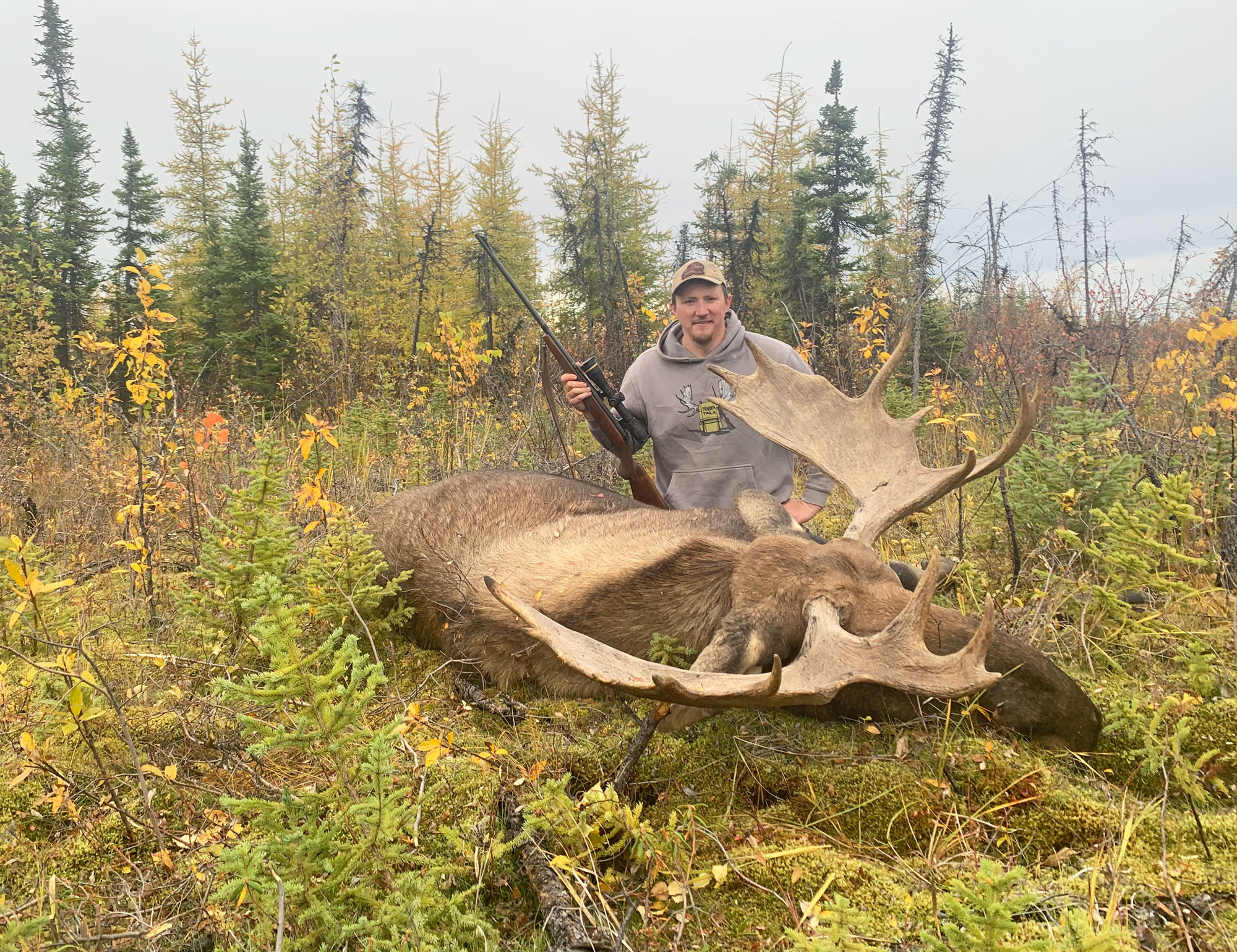
Focus on What Matters
Whether you’re hunting with a .243 Winchester or .375 H&H Mag., your concern should be selecting an ethical shot to take and executing it. A poor shot with a giant rifle will still end poorly. Ethical shooting on game requires you to consider bullet construction, your rifle system’s practical accuracy and shootability, the hunting situation, and the anatomy of your quarry. Can it be wise to select a larger cartridge with a deeper penetrating bullet for some applications? Sure, but only if you can shoot it well in the field (be honest with yourself). Remember that the larger you go, the more your practical accuracy will suffer. No one is immune to this. Former OL shooting editors Jack O’Connor and Jim Carmichel wrote at length on this topic.
I’ve had the good fortune to see quite a few calibers and bullet styles in action, and to examine the resulting wound channels. I’ve never noticed a linear trend or difference in wound size or trauma between magnum and medium-sized cartridges when using comparable bullets. The most dramatic wounds I’ve witnessed have all been from smaller calibers firing rapidly-expanding bullets at high velocity: cartridges like the .220 Swift, .22-250 Rem., .243 Win., and .243 A.I. The famous Alaskan market hunter and predator-control agent Frank Glaser claimed that nothing killed hoofed game as quickly as a shot through the lungs from his .220 Swift.
.338 Win. Mag. vs. 6.5 Creedmoor
Very few people would argue that a 225-grain copper monolithic bullet like a Hornady CX or Barnes TTSX fired from a .338 Win. Mag. lacks killing power (and it doesn’t), but I recently shot one through a large black bear on a follow-up shot and the results were uninspiring. The bullet penetrated deeply, passing through the bear as designed, but it left an exit wound about the size of a quarter with little visible damage beyond the small wound channel. At first my dad and I thought it was the broadhead entrance wound. In fact, the two bears I shot in the following days with a 6.5 Creedmoor and 143-grain ELD-X died faster, left better blood trails, and had significantly larger wound channels and tangential damage. The bear I shot broadside with the 143-grain ELD-X had an exit wound a bit larger in diameter than a golf ball. That’s not to say that the .338 Win. Mag. isn’t more powerful. But that extra power doesn’t unequivocally translate to more damage and a quicker kill. I’d chosen those bullets because in my testing they showed much less deflection from twigs and brush than the soft-point 250-grain Interlock bullets I had been using previously. If I really wanted to make the extra energy of that .338 be useful, the soft points would have been a better choice.
I like my large-caliber rifles too, but they are often unnecessary. I can’t recall a single animal I’ve shot where I wish I’d used a bigger gun. It’s easy to blame our chosen caliber for our mistakes, but simply switching to a bigger gun won’t fix poor shooting. When we need to make a follow-up shot or an animal doesn’t go down quickly with a magnum, our Fuddy inclination is to comment on how tough the animal or species is. When the same thing happens with a smaller caliber, we blame the gun. Usually, the caliber or cartridge has very little to do with it. So pick a cartridge that is sufficient to penetrate the vitals of the critter you’re hunting and a bullet that will create a large wound channel. Remember that the shootability and effectiveness of more modest cartridges are usually an advantage, and sometimes they can cause larger wounds than a heavy bonded or monolithic magnum bullet that blows clean through an animal.
Fudd Myth #2: I Can Zero My Hunting Rifle in Two Shots
When it comes to establishing a good zero for the hunting rifle, a Fudd will often take pride in how few shots it takes to get that scope dialed to perfection. The ultimate accomplishment is to take one shot, make a scope adjustment, and fire a second shot to confirm your skill and savvy — or so a Fudd thinks. I’ve been that guy. When I had the opportunity to run through the Army’s Basic Marksmanship Qualification almost 20 years ago as a civilian, I rolled my eyes when the staff sergeant made us shoot groups for both windage and elevation corrections on the zero range.
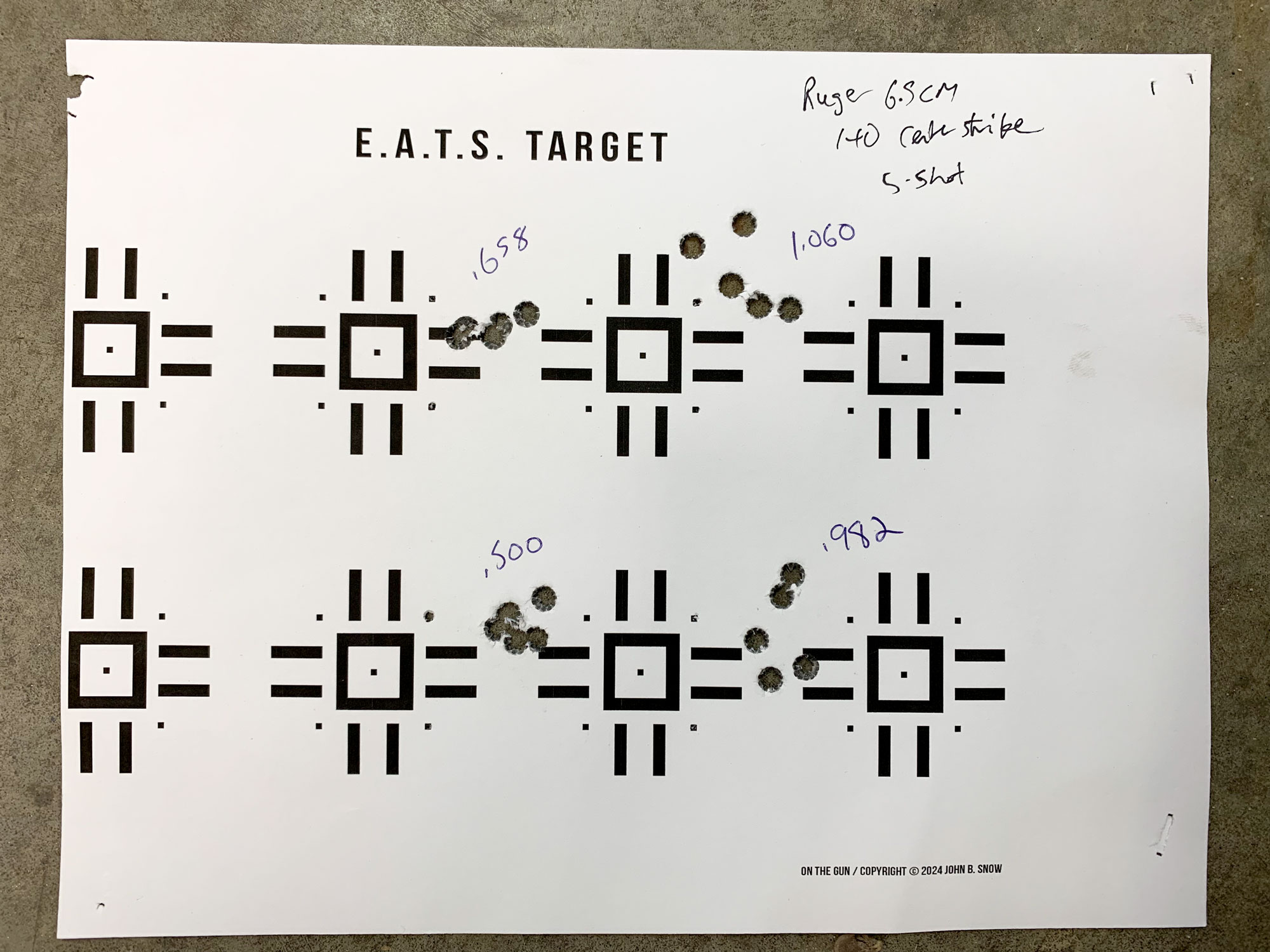
The two-shot zero can certainly be efficient, and if you’re hunting deer on the back 40, it’s usually going to work OK. It’s a great way to get your rifle close to zeroed, but when you’re only firing a few shots, you simply don’t have enough data to know where your true zero is located. That can cause you a lot of frustration down the road. A 15-, 20-, or 30-shot group will give you a much more precise zero and a lot more confidence.
Shooting Editor John B. Snow and I have been tilling up some serious sod on the subject of group sample sizes, and it’s changed how we think about rifle accuracy and what we can expect from a rifle — in a beneficial way. He recently wrote this detailed story on what a 20-shot zero actually means (it doesn’t mean to burn 20 rounds in a row through your lightweight hunting rifle) and how to compile the smaller groups you’re already shooting into useful, valid, aggregate groups. It’s much easier than you might think.
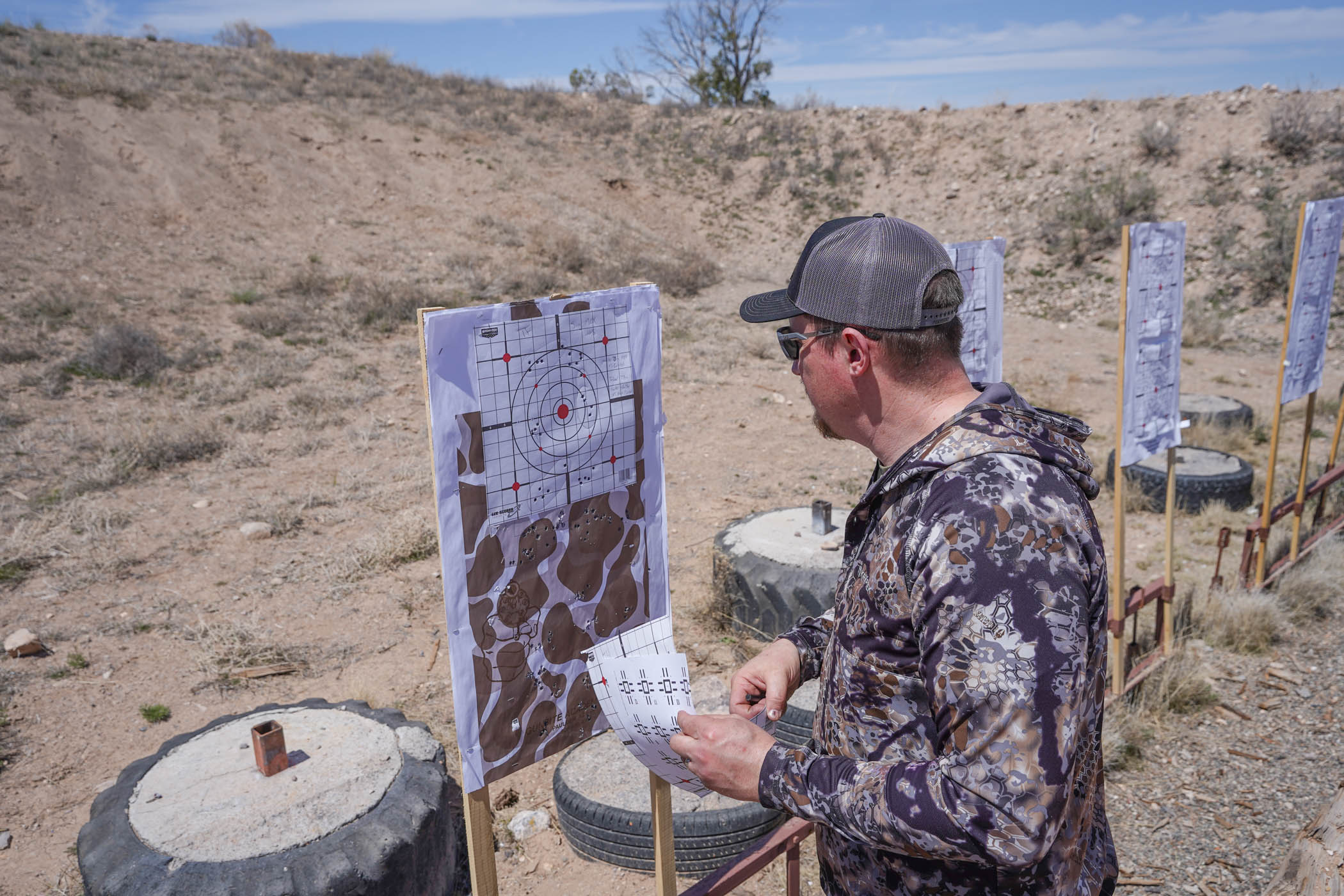
Most shooters already fire at least 10 to 20 rounds when zeroing a hunting rifle, either from confirmation groups or chasing holes around the paper. The same number of shots will give you much better results if you aggregate them and calculate your true zero before making any scope adjustments. To someone stuck in a Fuddy mindset, this seems extreme. What about human error in those 20 shots? Of course there is some human-induced error in your shooting. Your point of impact can shift slightly any time you break position. Even if you shoot with perfect form and under ideal weather and lighting conditions, your mean point of impact will float around slightly. But human error also occurs in hunting situations and from improvised shooting positions, so it’s better to account for those while zeroing. Some schooled-up shooters even break position between every shot when zeroing their rifle. Others calculate their true zero based on a large-sample-size group that includes shooting from multiple positions to establish a good middle ground.
The point is, “close enough,” doesn’t have to be our compromise anymore. Take the time and ammo to establish a solid zero.
Fudd Myth #3: I’m an Experienced Hunter, I Don’t Need to Practice
One of the most unique and baffling Fuddy attitudes that piggybacks on Fudd Myth No. 2 is taking pride in a lack of practice. Many hunters plainly state that they only fire their rifle once to check their zero before hunting season. They carry the same years-old box of ammunition as a badge of honor and skill. Their logic goes something like this: “I’ve been a hunter for 40 years and the shots I take on live animals are dynamic scenarios. You can’t practice for that sort of thing. You have to rely on experience and instinct.”
Then these Fudds will typically go on to make fun of anyone who shoots competitively or recreationally — especially if those shooters are using a modern cartridge like the 6.5 Creed.
The fact is, if you don’t practice a discipline like shooting, you will suck at it. You might get lucky, or your shot distance might afford you lots of forgiveness, but your shooting is almost never as good as you think it is. I know mine isn’t. Quality practice doesn’t mean blazing away at a paper target on a pizza box from a concrete shooting bench, either.
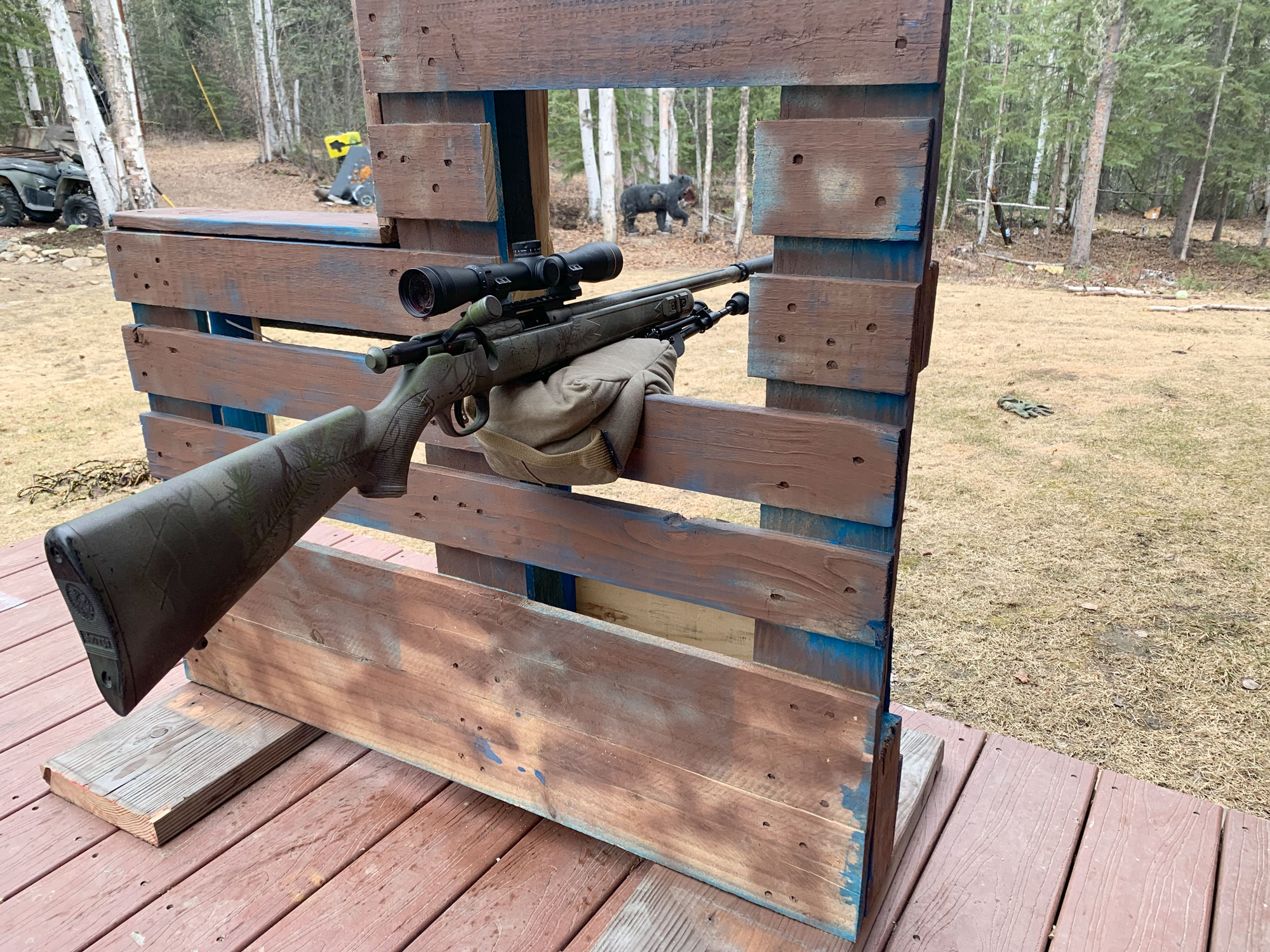
One key to quality practice is knowing what to practice and how. One of the most beneficial things I’ve ever done for my shooting was to take a crash course in precision rifle shooting at K&M Precision in Finger, Tennessee. Taking a good precision-rifle course doesn’t mean you have to become a PRS competitor or shoot game at long distances, but you can learn valuable skills and gain confidence. More importantly, you’ll learn where you’re weak and how to practice in those areas.
In preparation for an NRL Hunter match, I built a barricade out of a couple pallets, and practiced building and shooting from different positions in my backyard with a .22 and a stopwatch. I was blown away by how much easier and intuitive it was to quickly form solid shooting positions in the field after doing this. I learned techniques for shooting off a tripod using a small shooting bag, and different ways to use my equipment to build stable supported positions. After a while, I could regularly get first-round impacts on a 10-inch steel plate at 650 yards from a standing position — something I never would have thought I could do reliably.
Beyond individual practice, NRL Hunter is an excellent match format to improve your practical shooting skills. And it’s fun. No, it’s not a one-to-one simulation of a hunting situation, but it incorporates many of the elements that a hunting situation presents. For instance, you’re on the clock with limited time to find and shoot your targets, you must carry and manage your gear efficiently, and you’ve got to improvise positions and execute your shots. Pro shooters make these stages look easy because they’ve mastered the required mental and technical elements, and they usually don’t make dumb mistakes. Sure, there is some gamesmanship, but they’re exponentially more prepared to run a clean shot in a hunting scenario than the Fudd who checks his zero resting on a folded soft rifle case or a partial roll of paper towels once a year.

Fudd Myth #4: My Hunting Rifle Shoots Sub-MOA
Some of the most Fuddy hunting rifle claims I’ve heard involve the level of precision that even the cheapest rifles supposedly can achieve. Many are quick to claim that their rifles are sub-MOA, or even half-MOA — often to spite some fancy or expensive new rifle. Some Fudds even claim that their rifle is a one-ragged-hole gun. Many people think that any decent hunting rifle will be sub-MOA accurate. If it can’t be accomplished with factory ammo, it just takes the right charge weight or finding the barrel’s nodes to turn it into a tack driver. This is all B.S.
The first problem with these claims is that they’re meaningless without context. If we hope to gain a real picture of how precisely our hunting rifle can place bullets downrange, or make valid claims about them, we need to specify what we mean. Does the rifle shoot some sub-MOA three- or five-shot groups? Sure, lots of rifles can do that. It might make you feel good to tell your buddies that you have a real ringer, but in most cases, hunting rifles won’t keep all their shots within a 1-MOA limit. In fact, a hunting rifle that keeps shots reliably inside 1.5 MOA is quite good.
A rifle that will reliably shoot three-shot groups under an inch at 100 yards should not qualify as sub-MOA. This is because the sizes of three-shot and (and even five-shot) groups vary too much to be reliable. You might shoot a quarter-inch group; then the next group could be an inch and a quarter and still be within the gun’s normal dispersion range.Three- and five-shot groups are essentially meaningless to truly understand what you can expect from your rifle — unless you compile them into larger aggregate groups.
Cherry Picking Groups Isn’t Useful to Anyone
The human inclination is to latch onto the tightest group your gun shoots and use that to define and predict its performance. That’s fine when you’re bragging to other Fudds, but if you’re using that misleading data to calculate your effective range or compare it to another rifle, you’re not getting anything useful. Statistically, a correlated group of 20 shots gives you a pretty good idea of a rifle’s actual accuracy, 35 shots is really good, and 50 shots is nearly foolproof. If your rifle can keep 20 shots inside an inch at 100 yards, you could start to say that it’s a 1-MOA gun. But most hunting rifles won’t achieve this, so don’t worry if yours doesn’t either.
If you shoot a series of seven three-shot groups, those groups are going to vary in size and the impacts will vary in location. There is obviously human input compared to firing the rifle from an accuracy fixture (something some manufacturers do), but it’s not as much as you’d think. Through many thousands of rounds of testing, Hornady’s ballisticians have found that a skilled shooter can maintain groups within .125 MOA of a mechanical accuracy fixture. Even so, the human element will also be present in any hunting situation you encounter, so you should take it into account, too. If you compile smaller groups that you’ve fired into a 20- or 30-shot aggregate group, you have a really good picture of where any given shot you take at that distance will likely land — somewhere inside the outer limits of that group. You cannot predict whether your next three-shot group will measure .5 inches or 1.5 inches, but using larger samples and considering the mean radius will give you a better idea of how close your next shot will likely land to your true zero.
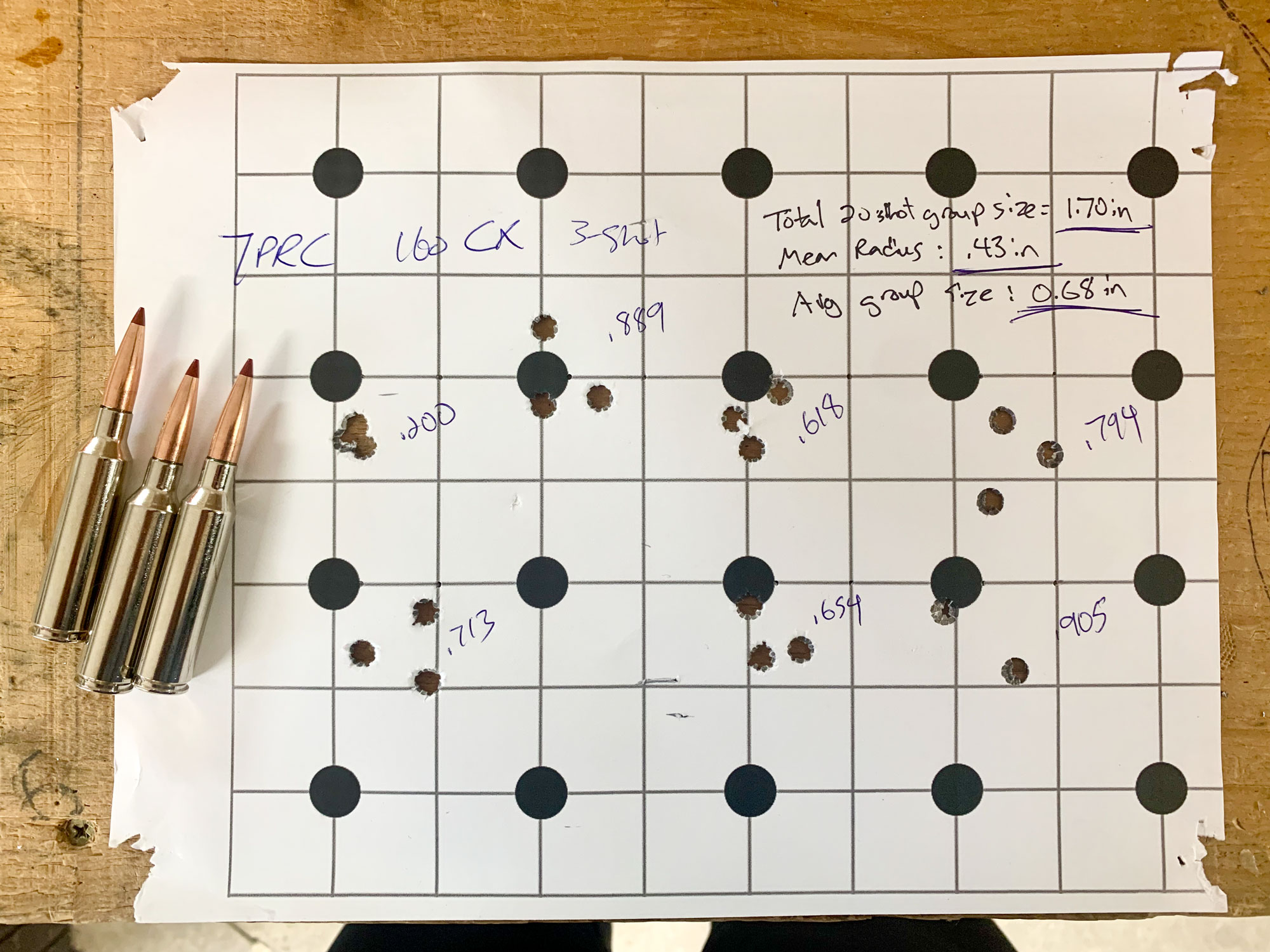
I won’t say that real sub-MOA hunting rifles don’t exist, they’re certainly out there. We had one centerfire rifle out of 20 in our 2024 gun test that recorded 20-shot groups under an inch: the Browning X-bolt 2 Pro McMillan. But these rifles aren’t nearly as common as most people think. Since shedding a bit of Fuddiness and recognizing the validity of larger samples, I’ve only come across two hunting rifles that can reliably print an aggregate of 20 shots under an inch. Out of 54 rifles I’ve tested or reviewed in the past two years, only that Browning and a Savage M110 Carbon Predator in .223 could do it. That’s truly exceptional accuracy.
The good news is that it’s OK if your hunting rifle and ammo shoot 2-MOA groups. It’s the same rifle you’ve always loved, and it should continue to serve you well for most of your hunting applications. Now you just have a more practical way to understand its capabilities.
Fudd Myth #5: Sighting-In for Maximum Point-Blank Range Is Better Than Dialing
Once the best practice for many hunters, using Maximum Point Blank Range is now relegated to the stacks of Fudd lore. For many years, MPBR was the best way to cover your ass when it came to shooting at distances beyond 100 yards. It’s the method I was brought up using and, before rangefinders and dial-up scopes, it was the way to go. You would zero your rifle to a calculated distance above the bullseye at 100 yards, so that at more extended distances, the bullet should still impact within the vital area of the animal without holding over.
Fudds will often hold our heroes like Jack O’Connor up as a standard for using the MPBR method, and they aren’t wrong. But we need to keep in mind that our predecessors were doing the best they could with the equipment they had in those days, and they did miss and wound a tremendous amount of game. I don’t believe a critical thinker and practical shooter like O’Connor would still use MPBR. And if you really want to get that scwewy wabbit, I’d recommend that you move on, too.
Using MPBR can be extremely effective for hunters who have a shootable rifle and a well-established zero, and who practice regularly. But it gets Fuddy when we take into account that many hunters who still rely on MPBR generally do not have well-established zeroes and do not practice much. All you have to do is show up at any shooting range before the rifle opener to witness this yourself.

The MPBR method makes sense in theory. If you and your rifle can place a bullet perfectly through the same hole every time, in any position or circumstance, it’s easy to say that, yes, your bullet will hit the vitals at 400 yards (or whatever distance the ballistic charts determine). But now let’s throw in human error. Considering that the average shooter might only be able to reliably keep their bullet inside a 2-inch circle at 100 yards from a field position, that dramatically cuts the probability of a clean hit at 400 yards. I’m not taking that chance when there are better options.
If anything has changed the accuracy and efficiency of the rifleman in the field for the better, it’s the laser rangefinder. Good rangefinders have only been available to the consumer en masse for around 20 years, and now they can accurately ping any animal we might responsibly shoot. A hunter who is good at range estimation can still be off by 50 or 100 yards or more — especially at longer distances. Our optics are also better than ever. With adjustable turrets, we can make precise adjustments to hit targets at distances that seemed unfathomable a few decades ago. Considering the tools we have, it’s silly not to use them.
Ranging and dialing is not a difficult task. In any competitive NRL hunter match, you will see everyone using rangefinders and dialing their scopes for each shot. And, most of these shots are usually at realistic hunting ranges between 250 and 600 yards, all within a time restriction. The point? Ranging and dialing is the best way to shoot accurately.
If you don’t have a couple of seconds to adjust your scope for an accurate shot at distance, then the shooting scenario is probably not a good one for you to be slinging lead anyway.
Breaking the Cycle of Fudd Lore
What I refer to as Fudd lore in the hunting and shooting world exists in just about every facet of society, and the solutions to such misinformation are objectivity and scrutiny. We all have some Fuddy ideas, but we also now have access to information and equipment that allow us to operate more effectively as hunters and to filter out the noise. Evolving with the times and technology helps us pass good and valid information on to the next generation of hunters and doesn’t mean abandoning tradition. If we discover a better, more effective, or more efficient way of doing things, it’s our obligation to change, rather than willfully perpetuate the same ideas and practices for no more reason than “it’s how we’ve always done it.”
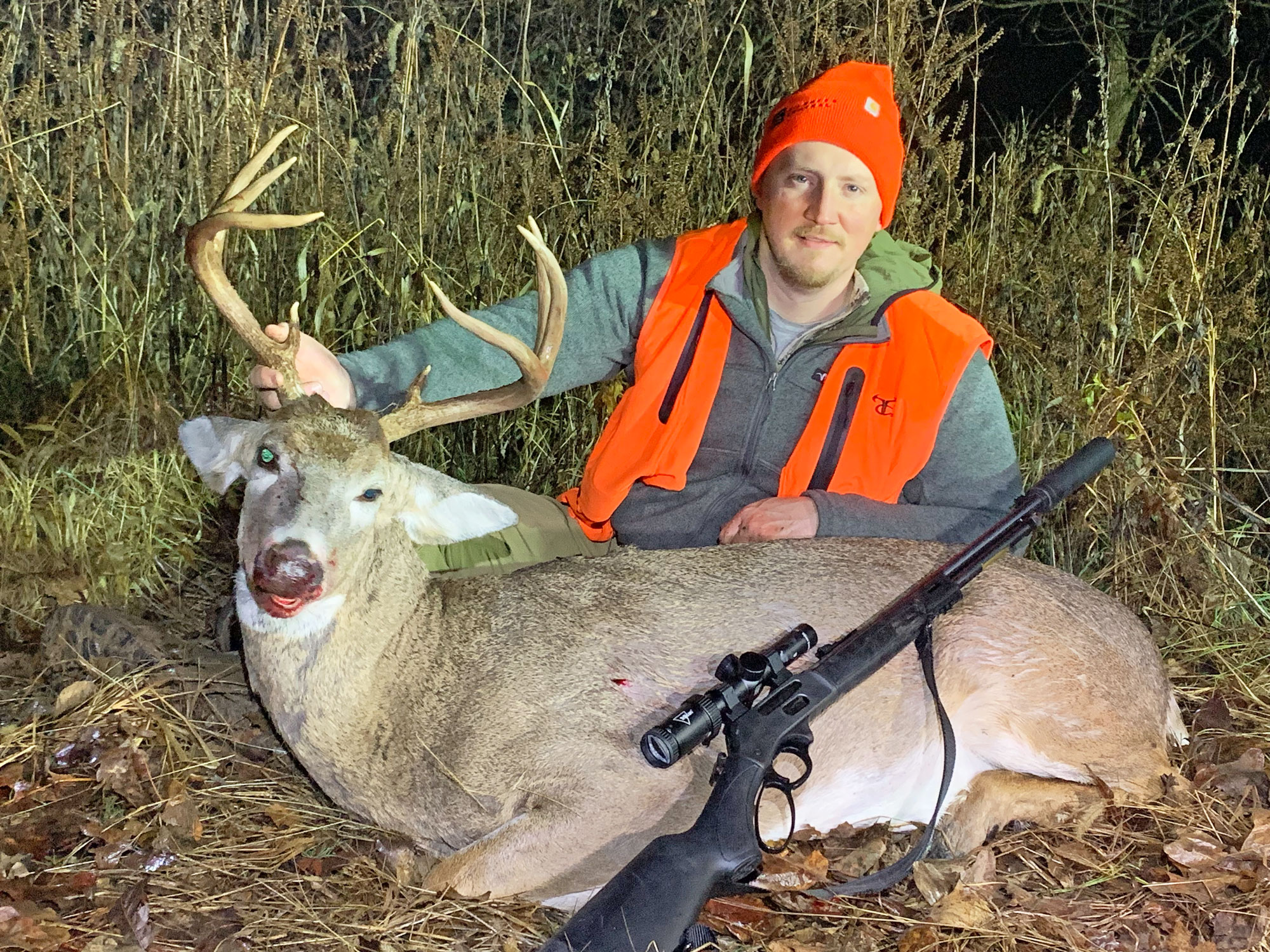
Some might think that repenting of our Fuddy ideas disrespects the generations that came before us. That’s simply not true. Grandpa wasn’t dumb, and he was a great hunter with the gear and methods he had available. But you can bet your ass he’d be toting a synthetic-stocked rifle and a set of EL Range binos if he were still out hunting moose today — even if he did still smoke cigarettes while trying to call in a bull.
The post Fudd Lore: 5 of the Worst Myths in Rifle Shooting and Hunting appeared first on Outdoor Life.
Source: https://www.outdoorlife.com/opinion/common-rifle-hunting-myths/


